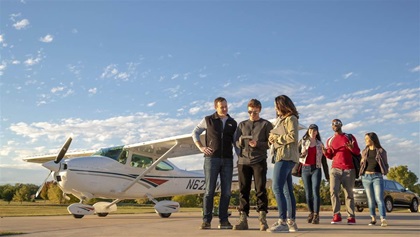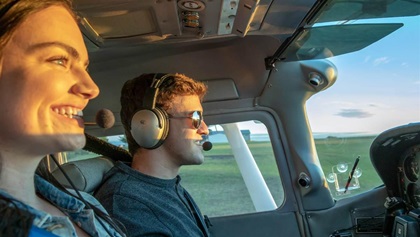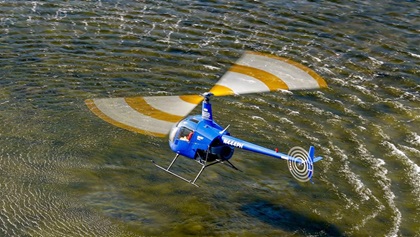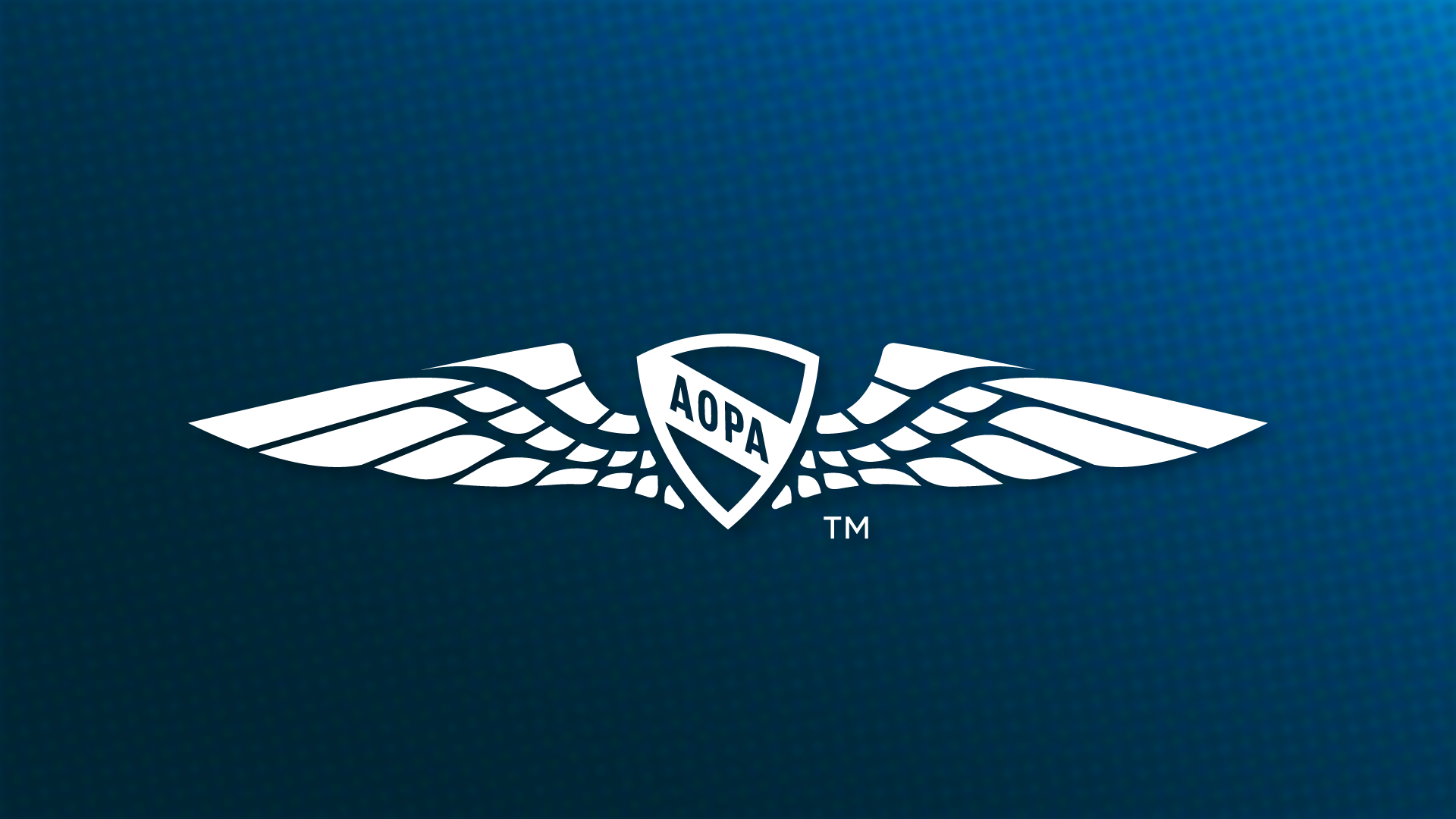Rekindle the spark
Fall in love with aviation all over again

You’ve lost sight of the goal. Flying is fun. It can be thrilling, satisfying, or offer friendship and camaraderie, but whether you fly a Piper Cub or an Airbus, flying should always have an element of fun and enjoyment. It’s your responsibility to keep it that way.
It’s an unfortunate truth that flight instructors are generally good at teaching people to fly airplanes, but they are lousy at turning people into pilots. Translation: Learning to fly likely set you up for a lifetime of safe adventures but gave you zero insight into how to have those adventures. The result is that many pilots get into a slump. You earn the certificate, take up your friends and family for a ride, go to a few local airport restaurants, and then get bored.
Thinking back to why you signed up for lessons, and why you committed the time and the money, is a great way to start a plan to reinvigorate your love of flying.Getting out of the slump starts with answering what can be a deceptively hard question. Why do you fly? Is it to travel? To have something fun to do on the weekend? To learn a new skill? To make friends? Or, the most common, you simply always wanted to? Likely it’s a combination of those and other motivations. Thinking back to why you signed up for lessons, and why you committed the time and the money, is a great way to start a plan to reinvigorate your love of flying.
From there, it’s a matter of making a plan. Simply showing up to the airport, pulling the airplane out of the hangar, or signing your name to the rental schedule isn’t going to magically reignite your passion. You can’t expect to keep doing the same things and get a different result. Here are a few ideas that can help get you over the hump.
Make friends
 It’s a solution so obvious you’ve probably overlooked it. Making friends in aviation is perhaps the most effective way to make flying fun and interesting. While the actual flying will hold your interest for awhile, you’ll quickly find that it’s the people who keep you coming back. Unless you’re that rare truly solitary person, connections with other people drive our experiences. They make the activity richer, the experience more joyful. Ideally these friends will be actual human beings and not avatars on your computer, but even the digital bros work in a pinch. Hopefully your airport has a small community that chills at someone’s hangar to share stories, organizes fly-outs, grills burgers, and turns the airport into less of an airplane parking lot and more of a community. Don’t be shy if you’re not an airplane owner with a hangar. When it comes to how you experience aviation, pilots generally don’t discriminate.
It’s a solution so obvious you’ve probably overlooked it. Making friends in aviation is perhaps the most effective way to make flying fun and interesting. While the actual flying will hold your interest for awhile, you’ll quickly find that it’s the people who keep you coming back. Unless you’re that rare truly solitary person, connections with other people drive our experiences. They make the activity richer, the experience more joyful. Ideally these friends will be actual human beings and not avatars on your computer, but even the digital bros work in a pinch. Hopefully your airport has a small community that chills at someone’s hangar to share stories, organizes fly-outs, grills burgers, and turns the airport into less of an airplane parking lot and more of a community. Don’t be shy if you’re not an airplane owner with a hangar. When it comes to how you experience aviation, pilots generally don’t discriminate.
You don’t even have to fly with your new friends. One colleague has traditionally owned and flown single-seat airplanes, leaving room for only him and a kneeboard. But I wouldn’t be surprised if the contacts app on his phone is out of space, and he’s often found at the airport even if he’s not flying. It’s great to fly together, but don’t let any feelings of apprehension of being together in the cockpit stop you from getting together on the ground. You’re an adult, so we’re not going to tell you how to make friends, but suffice to say you have a lot in common with everyone at the airport, so it’s not hard (see “The Buddy System,” July 2021 Flight Training).
Throw a dart
 Sometimes the challenge is finding a reason to go somewhere. You’ve been to the restaurants, you’ve been to the nearby grass runway, you’ve flown to the beach, and now you are out of ideas. Maybe in an ideal world we would always have a good reason to go somewhere, and even if your motivation for learning to fly was to use the airplane for travel, sometimes the easily justified destinations quickly run out. The solution is to throw a dart.
Sometimes the challenge is finding a reason to go somewhere. You’ve been to the restaurants, you’ve been to the nearby grass runway, you’ve flown to the beach, and now you are out of ideas. Maybe in an ideal world we would always have a good reason to go somewhere, and even if your motivation for learning to fly was to use the airplane for travel, sometimes the easily justified destinations quickly run out. The solution is to throw a dart.
This metaphor was easier when we used paper charts, but the idea is to pull out the chart, or pick up the iPad and select a new airport at random. There’s no need to search AOPA’s Airport Directory for the perfect spot with the best pie or the fun approach. Just graze the chart and pick a spot and go there. The equivalent of the Sunday drive, this strategy is all about discovery. It’s about finding new places, meeting new people, and expanding your world. While you could keep this as simple as a quick out-and-back with a touch-and-go landing, it’s more effective to build on the experience. Stop and buy some fuel, get a Coke, and chat up the people in the FBO. Even better, use the crew car, which can be an experience in and of itself, and go to town to check out the staff’s recommendation for the best lunch spot.
Now you can go back to your new friends at the airport and tell them about the retired cop cruiser the airport uses for a courtesy car, the great burger at the local diner, or the beautiful lake you saw on the way there. It doesn’t matter where you decide to go; the goal is to meet someone, experience something new, or learn something. You’re using the airplane to make life more fun and interesting.
Learn something
 Some people learn to fly as a means to an end. For others it is the end. They learn for the sake of learning. It could be solely to check off a bucket list item, or they could be the type of person who craves new knowledge and new skills. Earning a private pilot certificate no doubt scratched that itch for many months, but once training over, so is the enthusiasm for aviation.
Some people learn to fly as a means to an end. For others it is the end. They learn for the sake of learning. It could be solely to check off a bucket list item, or they could be the type of person who craves new knowledge and new skills. Earning a private pilot certificate no doubt scratched that itch for many months, but once training over, so is the enthusiasm for aviation.
Luckily, aviation has a nearly bottomless well of knowledge and skills to acquire. There’s the obvious, such as getting a new rating, to the less obvious, such as challenging yourself to become better at what you already know.
To be successful with the former you have to open your mind to all of aviation. Seaplanes, tailwheels, and twins are great, but so are helicopters, gyroplanes, gliders, and balloons. If you have a passion for flying and for learning new things, all of these will be rewarding. And if you’re someone who is motivated by a desire to learn, it doesn’t really matter how practical the pursuit is. Never going to fly a balloon again after you learn? It doesn’t matter. So long as what you are learning re-ignites your love of aviation, learning can be the goal.
You have to open your mind to all of aviation. Seaplanes, tailwheels, and twins are great, but so are helicopters, gyroplanes, gliders, and balloons.
For those with a more limited budget or lack of access to other types of aviation, learning new skills in the airplane or refining those you already have can provide motivation and fun. Ask an instructor to teach you more advanced stalls, try mountain flying, or learn how to safely operate off all types of unimproved airports. Or keep it even simpler and set a plan and goals for every flight. Push yourself to always land within the 1,000-foot markers, practice engine-out glides to a spot landing, or work on keeping your steep turns within 20 feet. Whatever the task, keep it fresh and interesting. A good instructor can come up with any number of fun exercises to try.
Join a club
 We’re going to go out on a limb and say that if you wanted to own an airplane you would have bought one already. Airplane ownership is an obvious way to stay engaged in aviation. It gives you a reason to come to the airport, provides a wealth of new things to learn, and it takes away the frustration of access. But if you don’t have the cash to put toward your own airplane, there’s another option that provides 75 percent of the benefits of airplane ownership at 25 percent of the cost.
We’re going to go out on a limb and say that if you wanted to own an airplane you would have bought one already. Airplane ownership is an obvious way to stay engaged in aviation. It gives you a reason to come to the airport, provides a wealth of new things to learn, and it takes away the frustration of access. But if you don’t have the cash to put toward your own airplane, there’s another option that provides 75 percent of the benefits of airplane ownership at 25 percent of the cost.
Research has shown that joining a flying club is a great way to be more fully immersed in aviation. Flying clubs can offer excellent airplane access at reasonable costs; you get a chance to learn a bit about ownership; and most important, it provides an immediate community. Sharing an airplane with a group of like-minded pilots is a quick way to make friends, gives you ideas on places to fly, and generally makes aviation more fun. AOPA has a list of flying clubs on its website (youcanfly.aopa.org/flying-clubs).
Learning to fly takes so much time, effort, and money that walking away from aviation shouldn’t ever be an option. Easily rekindle the spark you once felt, and grow your aviation life with a few friends, some challenges, a few new experiences, and a lot of fun.

